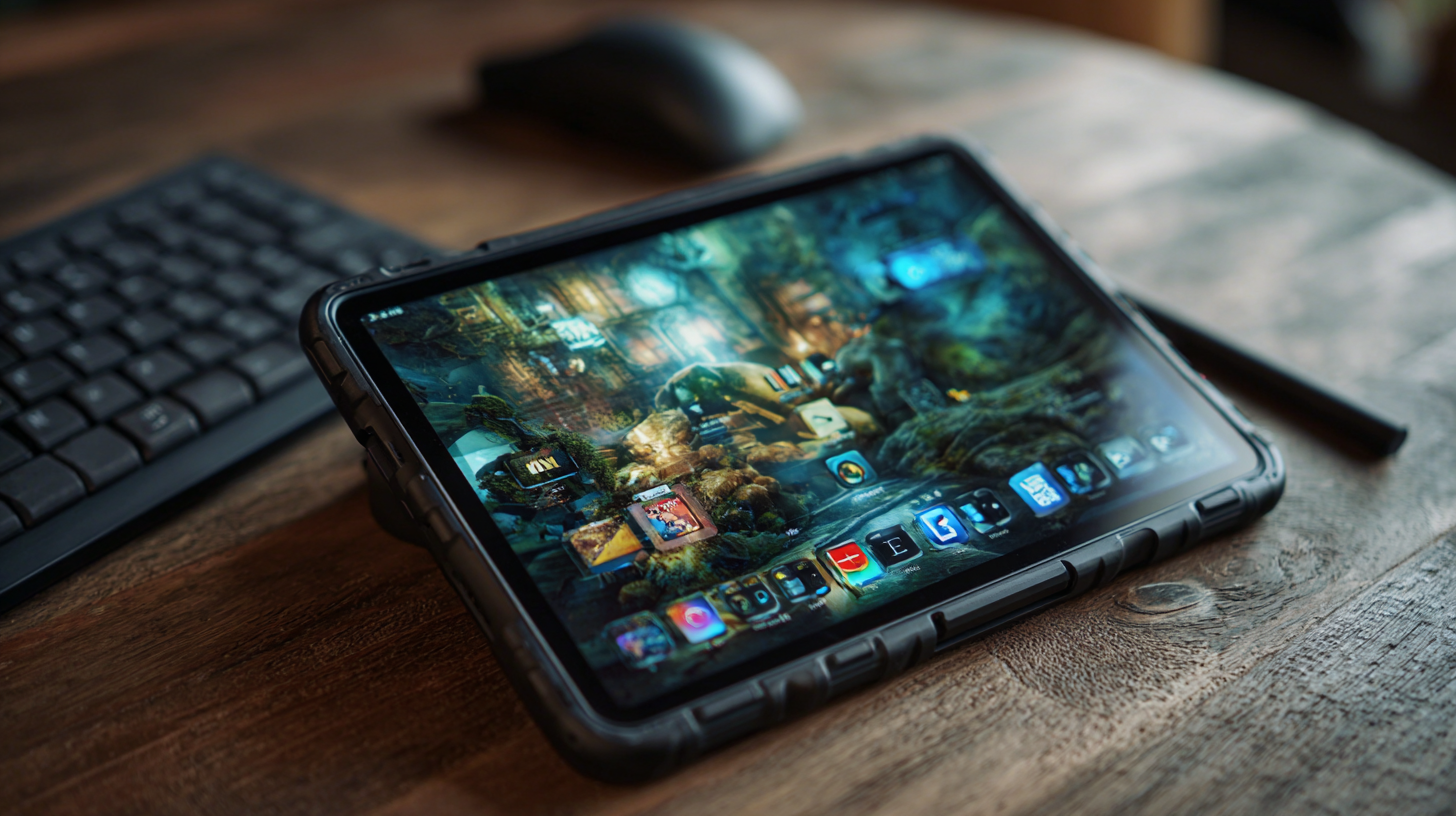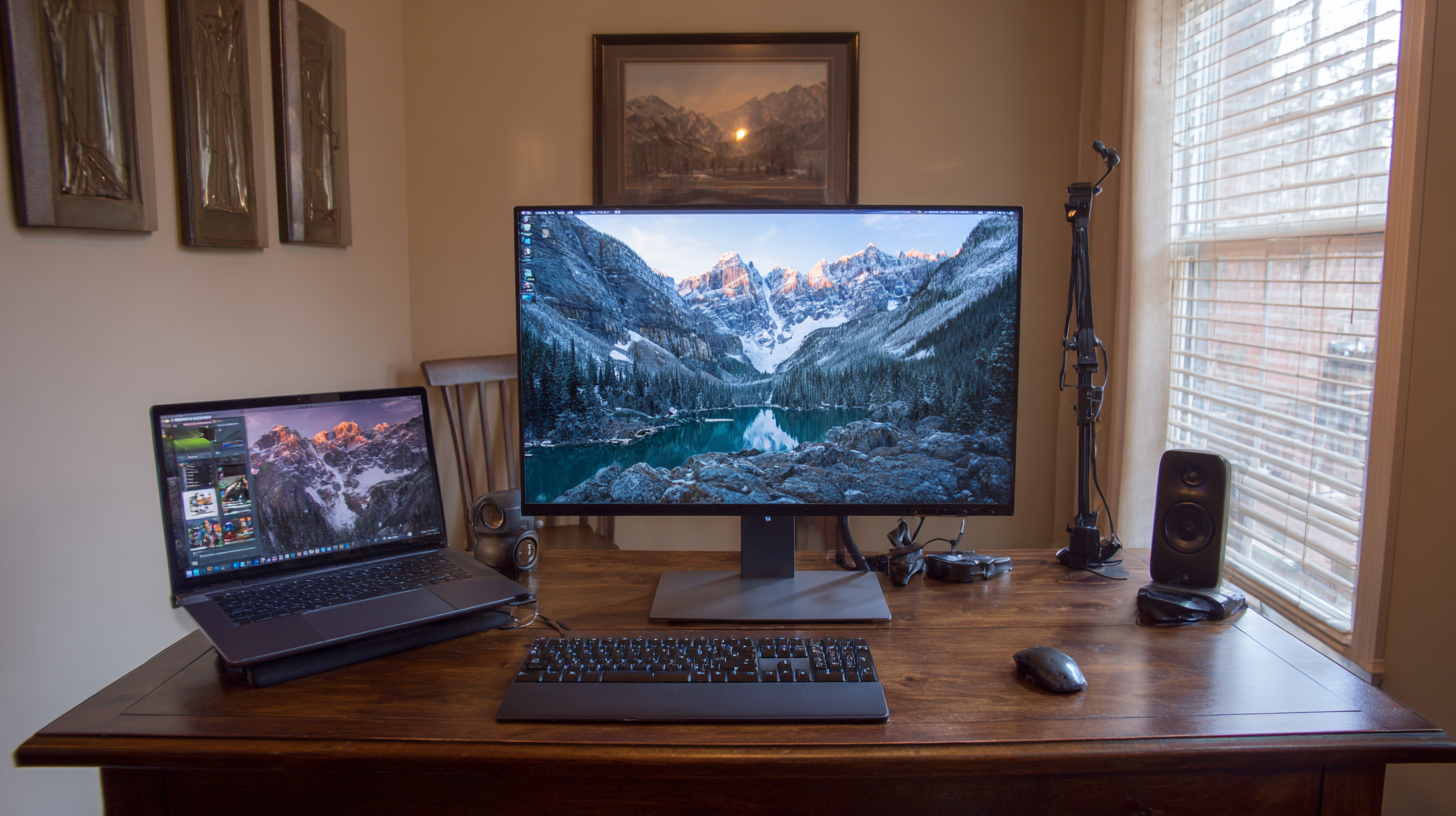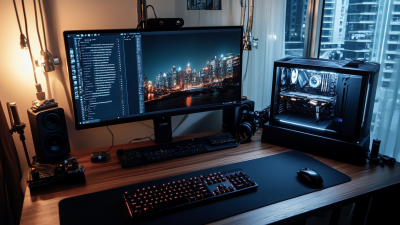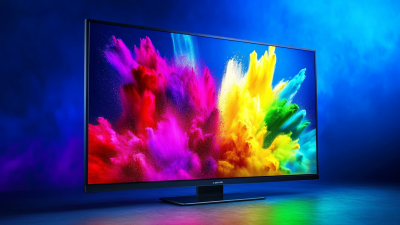Leave Your Message
In today's fast-paced digital environment, the demand for portable display solutions has skyrocketed, with the global portable monitor market projected to reach $3.4 billion by 2026, growing at a CAGR of 5.5% (ResearchAndMarkets, 2021). As professionals and content creators increasingly seek flexible work setups and enhanced viewing experiences, the HDMI portable monitor has emerged as a popular choice due to its compatibility with a wide range of devices, from laptops to gaming consoles. With various options available on the market, choosing the best HDMI portable monitor tailored to your specific needs can be daunting. Factors such as screen size, resolution, connectivity options, and additional features play a crucial role in ensuring optimal performance and usability. This guide aims to provide insights and recommendations to help you make an informed decision on the perfect HDMI portable monitor that aligns with your lifestyle and work requirements.

When selecting a portable HDMI monitor, understanding your display requirements is crucial. First, consider the screen size and resolution that best suits your needs. For tasks that involve detailed graphics or intricate design work, a higher resolution like 1080p or even 4K may be essential. Conversely, if you primarily plan to use the monitor for basic tasks such as presentations or document editing, a lower resolution might suffice, allowing for a more budget-friendly option.
Additionally, think about the connectivity options and portability aspects. Ensure the monitor is compatible with your devices via HDMI and check for additional ports like USB-C or DisplayPort that may enhance versatility. Weight and form factor are also important; a lightweight and compact design will make it easier to transport.
Lastly, consider your usage environment—if you plan on using the monitor in varied lighting conditions, look for one with good brightness and anti-glare features to ensure a clear view.
 When selecting the best HDMI portable monitor for your needs, there are several key features to consider that can significantly impact your user experience. First and foremost, display quality is crucial. A monitor with at least Full HD (1920x1080) resolution is recommended, as this resolution remains the industry standard for clarity and color accuracy. According to a report by MarketsandMarkets, the global portable monitor market is expected to grow to $1.5 billion by 2026, underlining the increasing demand for high-quality portable displays.
When selecting the best HDMI portable monitor for your needs, there are several key features to consider that can significantly impact your user experience. First and foremost, display quality is crucial. A monitor with at least Full HD (1920x1080) resolution is recommended, as this resolution remains the industry standard for clarity and color accuracy. According to a report by MarketsandMarkets, the global portable monitor market is expected to grow to $1.5 billion by 2026, underlining the increasing demand for high-quality portable displays.
Another important feature is connectivity options. A good HDMI portable monitor should not only support HDMI input but also include USB-C ports for versatile compatibility with modern devices. Additionally, factors such as screen size, refresh rate, and contrast ratio can all affect performance. For instance, a monitor with a refresh rate of 60 Hz or higher is ideal for smoother visuals, particularly for gaming or video playback. Research from Statista indicates that around 23% of users prioritize portability and lightweight designs, making size and weight critical factors in your selection process. By focusing on these features, you'll be better equipped to choose a monitor that fits your specific needs and enhances your productivity.
When selecting a portable HDMI monitor, the balance between screen size and resolution is crucial for an optimal viewing experience. The ideal monitor size is often determined by its resolution and the distance from which you’ll be viewing it. For instance, a higher resolution, such as 1440p, allows for a smaller screen to still deliver sharp and clear images. This means that if you find yourself sitting closer to your monitor, a 24-inch or 27-inch 1440p screen can provide a fantastic viewing experience without sacrificing quality.
Moreover, considering the aspect ratio is equally important. Monitors in the standard 16:9 aspect ratio are widely used for gaming and media consumption, while ultrawide monitors with a 21:9 aspect ratio provide an immersive experience for multitasking or cinematic gaming. The choice between these options should reflect your primary usage scenarios. By assessing your needs in terms of screen size, resolution, and aspect ratio, you can ensure that the HDMI portable monitor you choose is both comfortable to use and delivers an outstanding visual performance.
When selecting a portable HDMI monitor, the factors of
portability and power source are crucial to ensure it meets your specific needs.
A truly portable monitor should be lightweight and slim,
making it easy to fit into your backpack or carry along with a laptop.
Look for monitors that offer a compact design without sacrificing screen quality.
The size typically ranges from 15 to 17 inches, which strikes a balance between visibility
and portability. Additionally, consider the build quality;
a durable casing will protect your monitor during travels.
Equally important is the power source of the monitor.
Many portable monitors can be powered via USB-C, which not only reduces
the number of cables you need to carry but also allows for faster charging.
Some models may require an external power source, which could limit their usability on the go.
Evaluate whether the monitor can function solely on battery power or if it needs to be plugged in.
A monitor with a built-in battery can provide more flexibility during outdoor presentations or travel.
Ultimately, understanding these factors will help you choose a monitor that integrates seamlessly into your mobile lifestyle.

When selecting an HDMI portable monitor, budget considerations play a crucial role in making the right choice. It's essential to determine how much you're willing to spend while keeping your specific needs in mind. Portable monitors can vary significantly in price, from budget-friendly options suitable for basic tasks to high-end models with advanced features like 4K resolution and enhanced color accuracy. Assessing how you plan to use the monitor—whether for professional presentations, gaming, or simple productivity—can help you gauge the appropriate price range.
Additionally, consider the long-term value of your investment. Cheaper monitors may save you money upfront, but they could lack durability, image quality, or essential features that affect usability. Investing a bit more in a reliable and well-reviewed model might save you from future replacement costs. Be mindful of additional expenses, such as necessary cables or stands, which can impact your overall budget. Researching options that fit your financial plan while meeting your performance requirements will lead to a more satisfying purchase.






